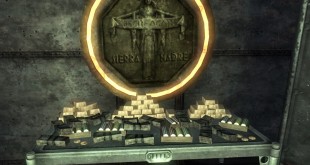Star Citizen, many things come to mind when the name of the game is brought up. It has one of the biggest crowd funding success stories as of now. With a lot of hype and a lot of announcements, Star Citizen is sure to be a game that many gamers will grab and remember for some time. We got a chance to talk to Tony Zurovec, the director of persistent universe for Star Citizen. While the answers have taken months to get back to us and some are a little dated, specifically Star Citizen is nearing $63 million, but the answers we have received from Tony Zurovec about Star Citizen are interesting to say the least:
1. Originally Star Citizen started crowd funding on your own and then moved to Kickstarter after a week. On Kickstarter the company was asking for $500,000 and reached the goal rather quickly and eventually went above and beyond it. Going in to crowdfunding what did the company expect?
We didn’t expect $55 million in two years, that’s for sure. Honestly we really weren’t sure what to expect. We felt there was some pent up demand for good, quality space sims and PC Games, but we didn’t expect the community to react the way it did. Of course, we have been overwhelmed with the amount of support and resources received during this process. In fact the Star Citizen community is nothing short of awesome. They are not only backing with their financial resources, but they are providing invaluable feedback to our team during the development process. In the meantime, we know we have to provide our fans with content during the entirety of this process. And we’ve done that with our modular content releases and regular updates. We are now two years into our crowd funding and people continue to upgrade their accounts and we continue to see brand new backers getting behind this project every day. Today the Star Citizen team and our fans are expecting a groundbreaking, spectacular space sim for the PC and an experience unlike any other.
2. We’ve seen a little bit of exploration in Star Citizen, but back in March after $41 million was reached it was announced that procedural generation for entire planets is being looked into for Star Citizen, can we have some more information on that?
Completely or even predominantly procedural generation is a longer-term goal. That type of technology requires significant standardization and organization of the various assets that will be utilized, and then a subsequent step whereupon the software to utilize those assets is developed that will allow logically consistent environments that match the high standards set by the overall game to be algorithmically constructed. We’ve got a good handle on the first two steps of the process, and are now in the process of having the artists and designers manually create the high bar for what we want the software to eventually be able to replicate in terms of quality and variety. Those initial maps will be rolled out to the community as soon as they’re ready so that everyone can get their first small glimpse of what we’re aiming to eventually deliver on a dramatically larger scale. I’m sure that quite a few more hand-crafted maps will be released before the procedural software reaches a sufficient level to where we can rely upon it rather than a designer’s deft touch. The ultimate goal is to be able to quickly create entirely new environments so that we can provide players with a huge universe filled with highly detailed and interesting areas to explore, but whether that process is purely algorithmic or simply assists the designers in the multi-step process of creating a map is something that we don’t yet know.
3. Speaking of exploration in Star Citizen, with entire planets what type of exploration can we expect? We have games like No Man’s Sky coming out here that seemingly have a very unique universe with a vast amount of exploration. What are the team’s goals for exploration as of now?
It’s not difficult to create a large, randomly generated world. The problem is in making a vast universe that’s actually interesting – that’s able to hold your attention for an extended period of time. On the mission side, for example, we’re aiming to algorithmically construct a lot of our missions, but we’re going to leverage our designers’ capabilities, instead of trying to entirely replace them with mathematical equations. We’ll have the traditional hand-crafted missions whereupon the player gradually progresses through a detailed storyline, but as with all MMOs the problem with that approach is that you’re always struggling to create enough new content to keep the player base entertained, and if that’s your only method of content generation the quality tends to suffer as a result. In your quest to deliver a large quantity of content, you tend to lower your standards and create a lot of really simplistic missions that aren’t very interesting, that are identical whether you’ve played it once or a dozen times, that aren’t even remotely fun to repeat, and that often have little to no direct linkage with the previous or subsequent missions you’re offered. For Star Citizen, we’re going to try and do something a lot different. Designers are going to hand-craft individual mission components, and then specify how those pieces can be customized at run-time and linked to others to form coherent chains that effectively represent small, unique stories consisting of multiple sequential mission objectives. Responding to a simple distress call, then, becomes a lot more interesting because – just like in real life – you never know what might unfold as a result. Prevent a freighter from being destroyed by brigands, and you might collect your reward and leave. Search the computer core of the attackers’ ship, though, and you might ascertain the location of one of their remote outposts. Infiltrate that base and you might learn where they stash their stolen booty and make off with a fortune…if you can figure out how to defeat or draw away the heavily armed ship defending it. I think that the end result is going to be considerably greater than the sum of the individual pieces, and provide players with a much more diverse and interesting world to explore, where there are a practically infinite supply of threads that, when pulled, can dynamically instantiate long strands of a story that the player can choose to pursue or ignore as they see fit.
4. With entire planets being built in Star Citizen, how do you plan on making them feel alive and vibrant?
Every NPC will have their own individual 24-hour schedule periodically constructed for them based upon things like how the economy is doing and what’s happening and within the solar system. A prosperous, growing economy might be reflected by the streets being filled with businessmen, tourists, and shoppers by day, and bar patrons, restaurant diners, and revelers at night. Criminal activity – muggings, vandalism, pickpocketing, and even assault – might rise significantly once the sun sets, especially in those areas off the beaten path or on planets facing economic hardship. Some stores will close at night, leaving travelers arriving at odd hours and in need of their services and/or products to either burn some time at one of the establishments open around the clock, or trying to find an alternative source for their needs, which might mean trying to strike a late-night deal in a dark alley with a character of questionable integrity.
5. What was your favorite Space game when you were growing up and when you look at Star Citizen currently, does it resemble it in anyway?
That’s a hard question to answer because while I liked a lot of different games from that time period – the late 1970s to the late 1980s – most of the space-based games back then were oriented towards arcade action. I spent plenty of time playing them, but they didn’t really have the same level of depth as some of the fantasy games of that period. So…I played Asteroids, Lunar Lander, Star Raiders, Star Trek: Strategic Operations Simulator, Zaxxon, Rescue on Fractalus, and all of those types of games, but the ones that really held my attention were the fantasy games with more substance like Wizardry, Ultima, and Dungeon Master. All three of those games bear some basic conceptual similarities to Star Citizen in regards to how, at the time, they were really pushing the envelope on the diversity and the amount of content that they offered, the exceptional level of detail that they provided, and – in the case of Ultima – the detailed presentation of a large, functional world that you could explore at your own pace.
6. With entire planets being generated in Star Citizen, can we plan to see some RPG-like story elements on the planets?
There will definitely be some RPG-like elements on the planets. Landing zones will be filled with characters that respond to you differently based upon your reputation and your affiliations. The missions you’re offered, the information you’re given, the assistance you’re granted – all of those things might be affected by how that NPC views you – by what you’ve done in the past, and how successful you’ve been in your endeavors. If you’re a notorious pirate ransacking the transport lanes, you shouldn’t expect to be offered missions protecting a politician or a princess. If you predominantly haul freight, you probably won’t be offered a lot of rescue missions, or at least the more dangerous – and potentially lucrative – ones. If you’ve committed serious crimes and are a wanted felon, you’d best avoid those areas with larger security contingents. Ultimately, what you do will affect both how you’re received at any given moment in time, and the future choices that you might be offered. You can always change your ways, but just like in the real world you shouldn’t expect the NPC population to immediately take you at your word – a long stretch of piracy on a player’s ledger won’t be quickly forgiven by the more discriminating members of society.
7. It is stated that we will see a persistent universe in Star Citizen, but is it dynamic? Naturally we can expect space battles to erupt between players, but can we just randomly happen upon computers fighting?
The composition of characters that you see at the various landing zones – criminals, vagrants, factory workers, businessmen and women, tourists – won’t be a constant but will instead vary according to the results of a simulation tracking the individual desires and actions of millions of NPCs. That simulation – which will be impacted by the actions of the players – will also dictate the prices of various goods and services, the type of jobs available and what those jobs pay, the amount of criminal activity in an area, and many other such things. As a result, the visible fortunes of a given area will ebb and flow with the overall economy, which will make planets seem more like a living, breathing entity than a static area where you occasionally stop to refuel your ship. If an asteroid belt is discovered that’s laden with valuable elements, the economy of a nearby planet might explode as more and more NPCs are attracted to mining those assets, and fewer are willing to work in the factories. More cargo ships would be needed, which would in turn spur demand for component parts, raising prices on a whole slew of other things. Hijackers would be drawn to the lightly armed transport ships, which would result in more conflict in the shipping lanes and, eventually, significant increases in things like the cost of weaponry, ammunition, and protective escorts for that area. As the resources of the mine were gradually depleted, or more NPCs or players showed up to exploit the situation in one way or another, the planetside economy and activity within the system would reflect those changes. Over time, then, systems will face considerable change across a range of different areas.
 Load the Game Video Games, Reviews, Game News, Game Reviews & Game Video Trailers
Load the Game Video Games, Reviews, Game News, Game Reviews & Game Video Trailers


